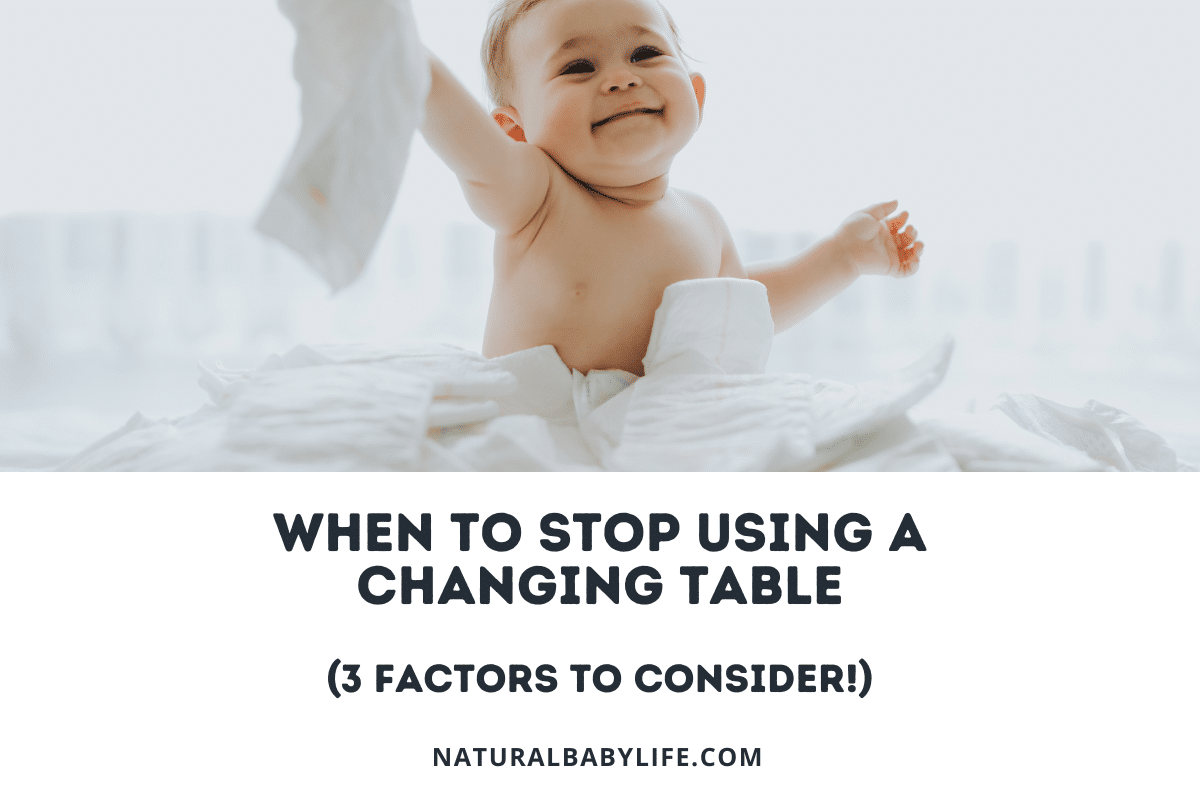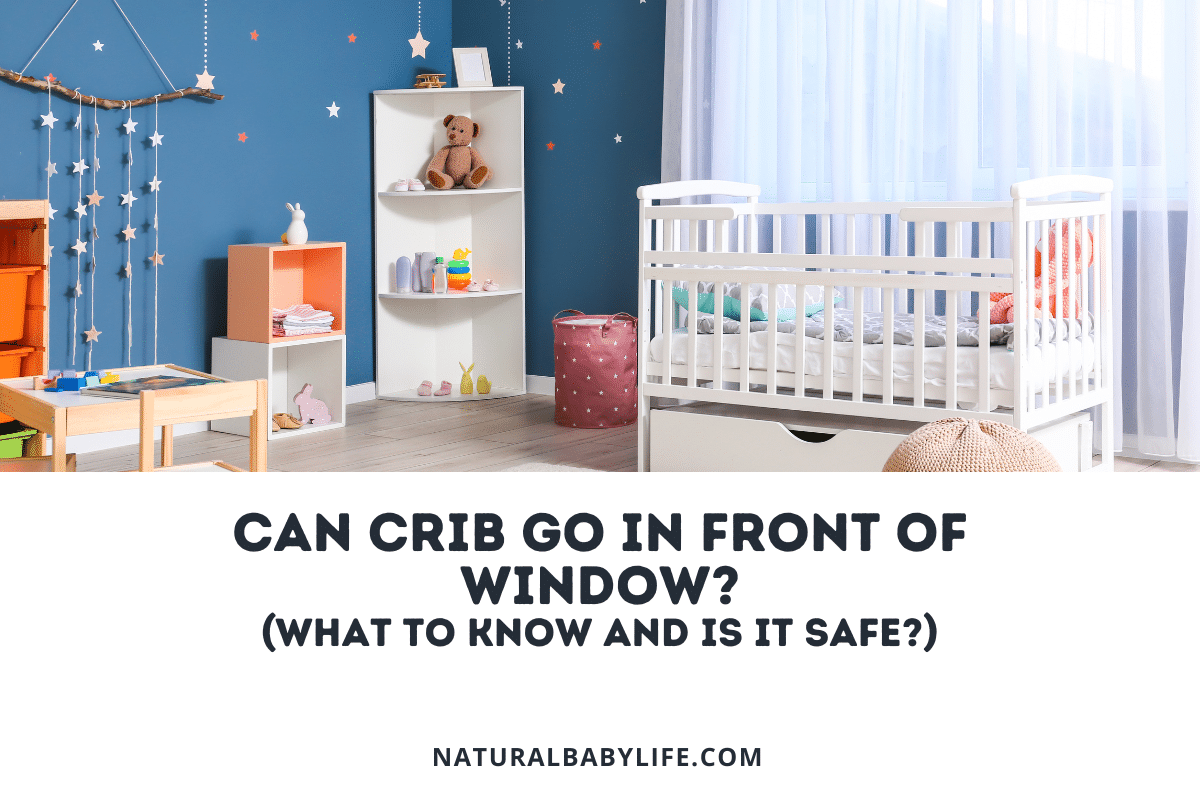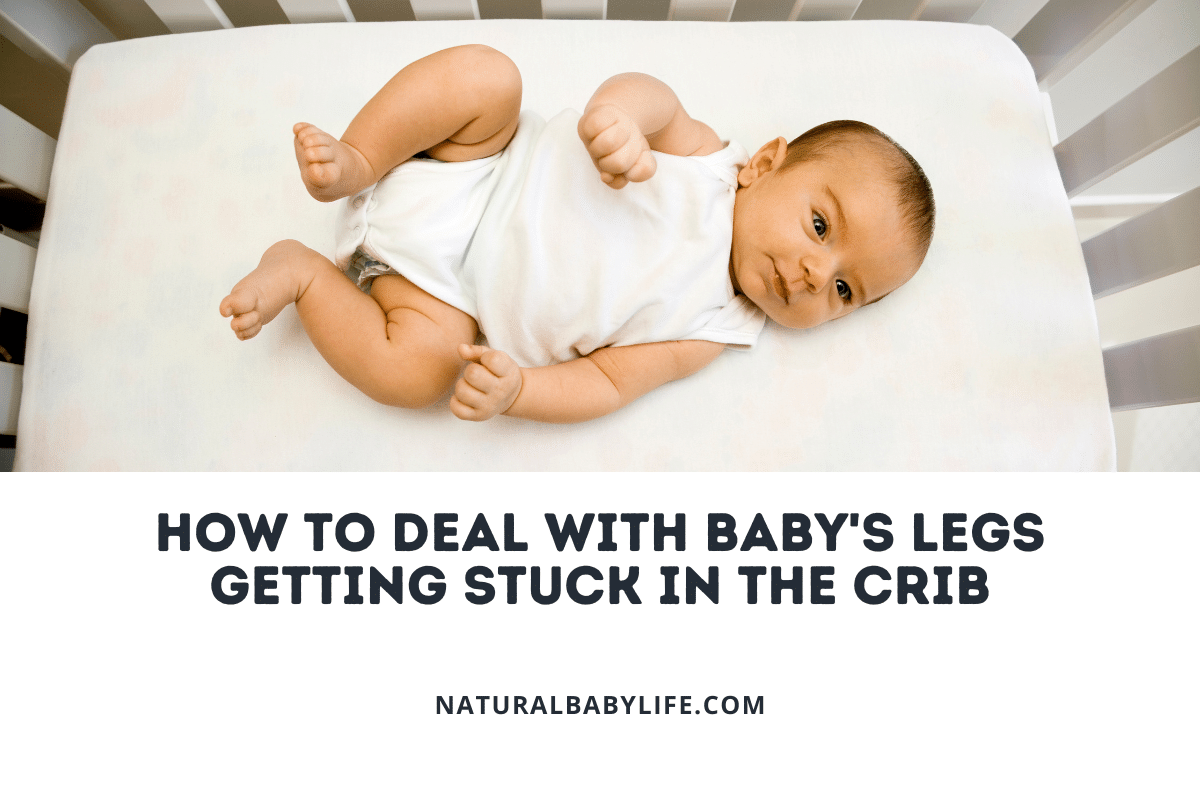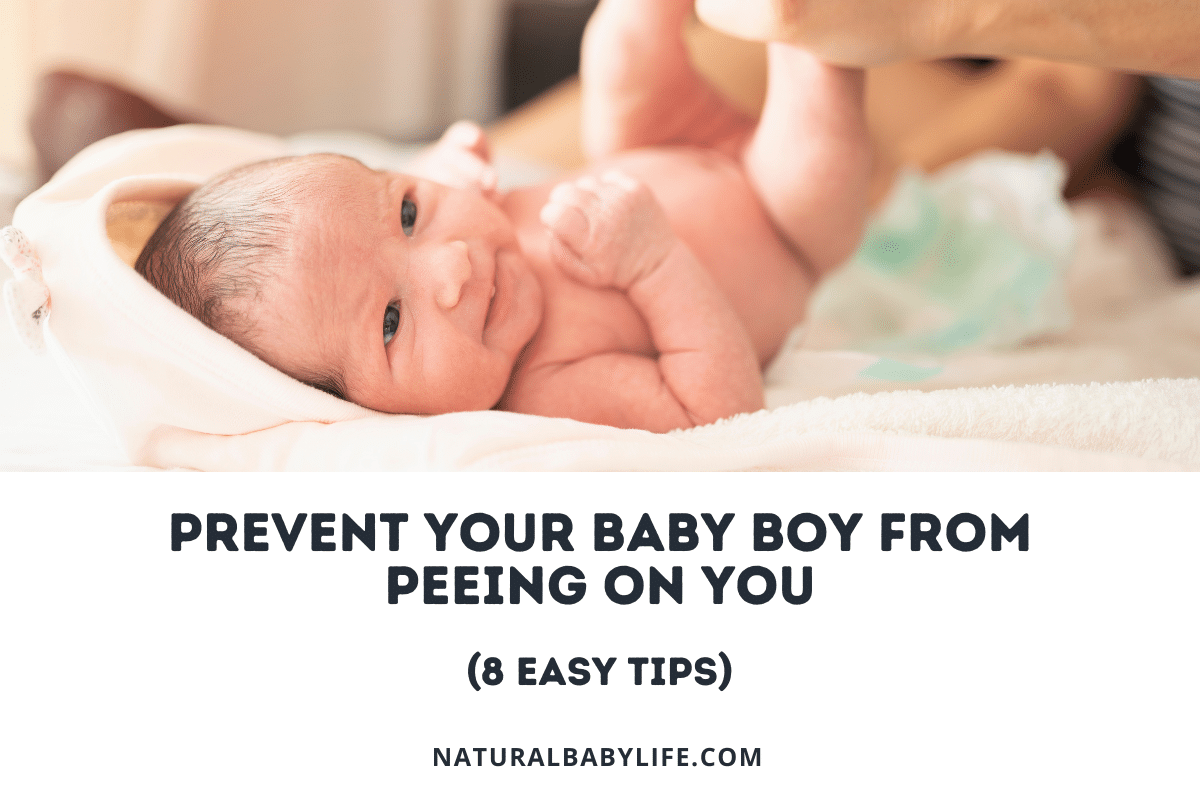A changing table can be a great addition to your baby gear. It’s a convenient place to change your baby, especially in those early days when it feels like you’re changing a million diapers a day! But you might wonder about when to stop using a changing table and if you can use one until you’re ready to start potty training your child.
Parents should stop using a changing table if their baby weighs more than 30 pounds, is strong enough to sit up or roll from back to front easily, or can no longer be held in place safety with a child restraint. This typically happens between 6-12 months.
The exact time you need to give up the changing table will vary based on your baby, so let’s look at the specifics, including whether you can just skip the changing table altogether.
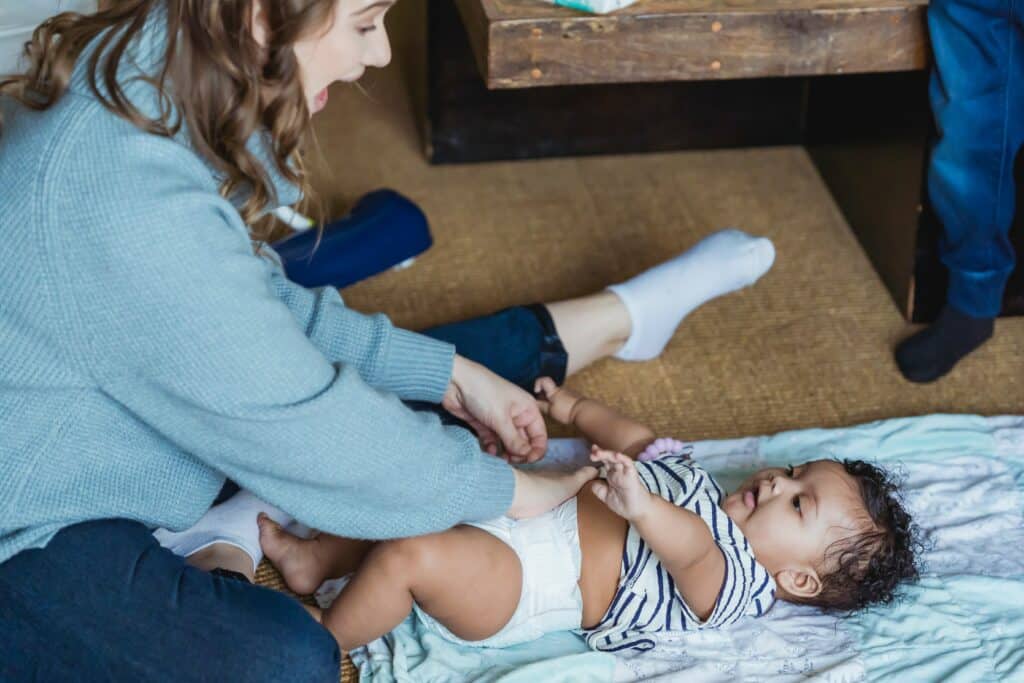
Table of Contents
When to stop using a changing table
Many parents use a changing table for at least the first year of their baby’s life. When you have a newborn, you need a safe space to change your baby and having a changing table makes it really convenient. As your baby grows into a toddler, it becomes trickier to use a changing table.
Before we determine when you should stop using a changing table, let’s first take a look at what a changing table is and the best way to use one.
What is a changing table?
A changing table is piece of furniture specifically designed to be a place where you can change your baby’s diapers. There are several different kinds of changing tables.
You can purchase a stand-alone changing table that only functions as a place to change your baby and store supplies. Most stand-alone changing tables also have a shelf or two where you can store diapers, wipes, and anything else you need to change your baby.
Instead of a stand-alone changing table, you can also purchase a dresser that functions as a changing table. These dressers have a place for a changing pad on the top, so once your child outgrows the changing table, you can still use it for storing their clothes.
There are also several other alternatives to use in place of a traditional changing table that we’ll discuss more below.
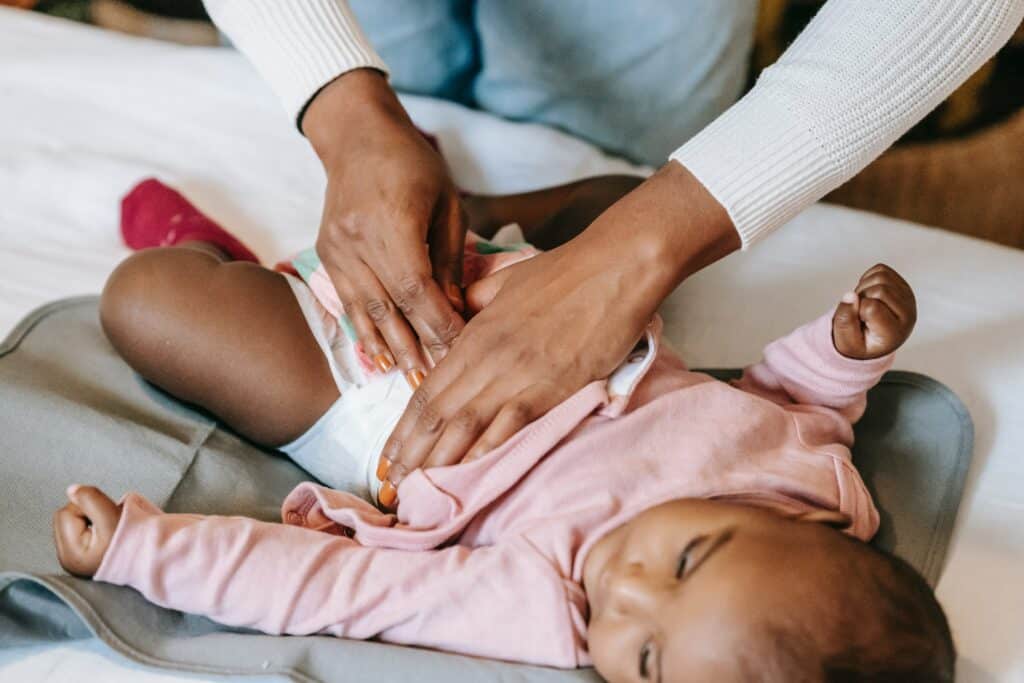
Deciding when to stop using a changing table
A changing table can be really convenient when your baby is little, but you may wonder when it’s time to stop using the changing table. There are three main factors that are going to determine when it’s time to stop using it and they are your baby’s age, size, and developmental milestones.
Baby weighs too much
Depending on your changing table, weight isn’t often an issue. Changing tables do have weight limits, but they are usually 30 or 35 pounds. If you’re not sure what the weight limit is for your changing table, check with your manufacturer to be sure. If your baby has gone past the weight limit, it’s time to stop using the changing table.
Baby is too big
Another reason you may need to stop using a changing table is your baby’s length or age. If your baby is tall for their age, you might find that they don’t fit on the changing table anymore.
Even if your baby still fits on the changing table, you may want to stop using it when your baby is between 12-18 months old. Around 18 months old, your child may start to show signs that they’re ready for potty training.
Baby starts to roll over
When babies learn to roll over, they love to practice their new skill! You probably don’t have to stop using the changing table yet – often babies stop rolling quite so much once the novelty wears off.
As your baby gets older and more independent, she may start resisting diaper changes. This often comes with more attempts at rolling away, kicking, or even trying to crawl away or stand up. At this point, you will need to make a judgment call. You may be able to keep using the changing table if you can distract your little one enough to get the diaper change done.
If you don’t feel like you can safely keep your baby contained on the changing table, it’s probably time to say goodbye. Some parents find that once their baby outgrows the diaper change fighting stage, they can go back to using the changing table for a while longer.
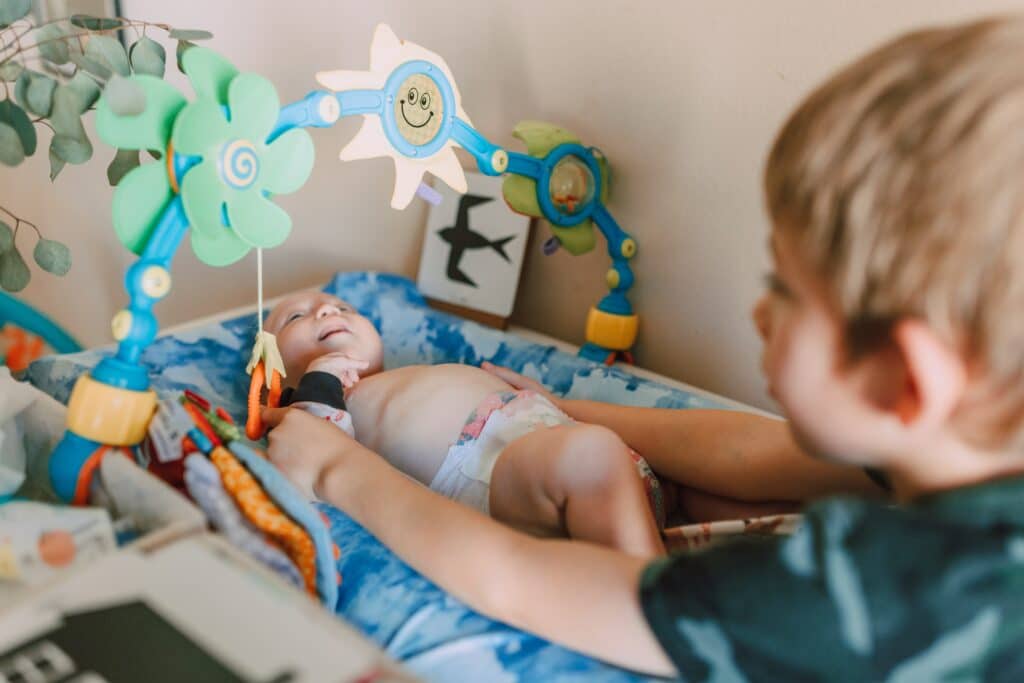
When is a baby too big for a changing table?
Weight limits vary by manufacturer, but a changing table can typically hold a baby up to about 30 pounds. Check to be sure what the specifics are for yours.
You might also notice that your baby’s long legs are hanging off the end of the changing pad. This is okay, as long as they are still within the changing table’s boundaries. If there are little legs hanging over the edge, your baby is too big for the changing table.
When do babies outgrow changing tables?
The average child doesn’t reach 30 pounds until between ages 2 and 3. However, babies in the 90th percentile for weight can reach 30 pounds as soon as 14 months! If you have a large baby, pay close attention to your table’s weight limits.
Often once babies reach 12-15 months, they start fighting diaper changes and try to escape while you’re changing them. This developmental milestone is typically when they have outgrown the changing table.
The caregiver’s physical ability plays a role in changing table use too. If you are unable to safely lift your little on and off the changing table, it’s time to stop.
Safety tips for using a changing table
Whether your baby is too big for the changing table or not, it’s important to keep your little one safe during diaper changes. This isn’t much of a challenge when you’re changing a newborn, but when your baby starts to roll over or try to get away during diaper changes, it’s not as easy to keep them still.
How do I stop my baby from rolling off the changing table?
As always, you should use the strap on your changing pad or table while changing the diaper. This isn’t meant to fully secure them, but it does help with rolling over. This is especially true when they are just trying to roll because it’s new and exciting to them. At this point, they are still small enough that the strap can help keep them on their backs when used properly.
Keep your hand on your baby at all times while changing. Make sure you have everything you need accessible before you start so you can give your full attention to your baby. If your older baby is trying to roll away or escape the diaper change, you might want to try a distraction.
Here are a few other tips to keep your baby safe while using a changing pad:
- Keep all of your supplies nearby when changing diapers so that you won’t be tempted to walk away from your baby.
- Establish a routine with your baby to ensure that you do things the same way every time to make your baby more comfortable.
- Sing or talk to your baby during diaper changes to keep them distracted and less likely to squirm around during the change.
If at any point, you feel that you cannot keep your baby safely on the changing table, you should stop using it.
When to get rid of a changing table
If your changing table is damaged in a way that makes it unsafe, you should stop using it immediately and get rid of it. A broken changing table can collapse under the weight of your baby, which can be very dangerous.
If you’re done with the changing table but it’s still in good shape, you can save it if you’re planning to have another baby. If not, you may be wondering what else you can do with an old changing table. One issue that people have with changing tables is that they are hard to repurpose once the diaper days are over.
Some people get creative and upcycle their changing tables into other useful pieces of furniture. If you’re crafty, this could be a fun project! If not, you can try selling or donating it.
Do you really need a changing table?
There are some many items to buy when you have a new baby and some parents wonder if they really need a changing table. The short answer is no, you don’t necessarily need one. Many parents choose to forgo the changing table, either for space or budget reasons. The only thing you really need is a safe space to change your baby that is well-stocked with all of your diaper changing supplies.
In my experience, I’ve always felt that a dedicated changing table wasn’t worth the price. In fact, we’ve always just used a changing table pad along with a cover with all four of our babies. Changing table pads are awesome because you can move them around to different parts of the house, they are easy to clean, and very budget-friendly!
Here is an example of a great changing table pad that should serve you well for many years, if needed:
You can also just use space on the floor or another piece of furniture. Once the baby is standing, some parents prefer to do standing diaper changes in the bathroom.
What can I use instead of a changing table?
If you have space, you can use a wide dresser instead of a more traditional changing table. Just get a changing pad to place on top. You can use some of the dresser drawers to store diapering supplies and still probably have space for clothes. This can be a good option because when you’re done using it to change your baby, you can still use it for storage.
Another option for changing your baby’s diaper is to simply start on the floor. When your space is tight, it may not be feasible to have an entire changing table set up. If you have a lot of stairs in your house, you probably aren’t going to go up and down every time you need to change a diaper, right? In this case, you may prefer to set up multiple small diaper changing stations in the rooms where you spend the most time.
Frequently Asked Questions (FAQs)
When should you stop using an Ikea changing table?
Like most other changing tables, any changing table from Ikea will have a specific weight limit. Each model may have a different limit, so be sure to check the weight limit for the specific one you have. The weight limit will usually range from 20-35 pounds.
When do you stop using a changing pad?
If you’re using a changing pad on the floor, you don’t have to worry as much about weight limits or size. You can keep using a changing pad as long as you’re able to keep your baby on it during diaper changes.
Do you need a diaper changing table?
Although a dedicated changing table may make your life easier, you don’t necessarily need one. All you need is a safe area to be able to change your baby. This can be on a changing table, on a changing pad, or even on a towel or blanket on the floor.
Do toddlers need a changing table?
For older toddlers who aren’t potty trained or who have special needs, there are toddler changing tables you can purchase. These are sturdier and can even have stairs so you don’t have to pick up a larger child.
Conclusion
As soon as your baby is born, the diaper changing begins. In those early days, it can feel like you change millions of diapers which is why it’s so important to have a safe and convenient space to change your baby. If you choose to use a changing table, be sure to check the weight limits to ensure you stop using it once your baby gets too big.

